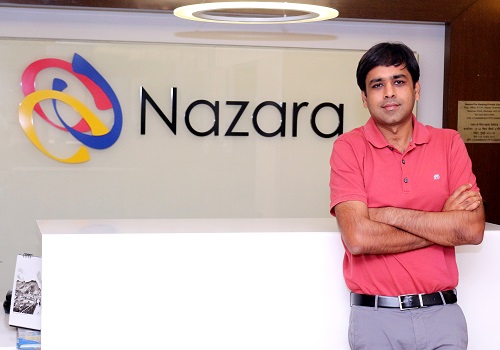IT Services: 2024: A year of Gen AI experimentation from Kotak Institutional Equities

Follow us Now on Telegram ! Get daily 10 - 12 important updates on Business, Finance and Investment. Join our Telegram Channel
2024: A year of Gen AI experimentation
The majority of large global enterprises are actively experimenting with gen AI and have high hopes for the technology. We expect a sharp percentage increase in generative AI-related spends in CY2024, though on an absolute basis, it will not be significant enough to move the needle for most large and mid-tier services firms. The focus of AI platform providers has shifted from providing more capable models to making them more enterprise use-friendly. Possible use cases are expanding but only a few appear to be primed for mainstream adoption.
Majority of large global enterprises are actively experimenting with gen AI
Open AI’s recent developer conference indicated that 92% of F-500 enterprises are building off of OpenAI products. Even companies that banned usage of ChatGPT during the initial months of its public release are experimenting with more secure sources or developing their own models. A few companies across verticals are taking the lead and investing in several PoCs and pilots across a whole host of use cases.
Expect sharp percentage increase in generative AI-related spends in CY2024
Most companies invested in generative AI experimentation in 2HCY23. The full contribution will naturally contribute to increased spending in CY2024. (1) Updates to GPT-4 making it more developer-friendly and useful for enterprise use cases, (2) release of more capable competitor models, (3) decrease in model API costs and (4) measures taken to address some of the limitations of the technology, such as data privacy and copyright law adherence, will fuel more experimentation. The scale-up of successful pilots will consume additional investments as well.
Spending on gen AI adoption in CY2024 may not be significant for most vendors
Spending relative to overall tech spends will be low in the experimentation phase. Spending on generative AI may not be a significant growth driver for most services firms and software firms. Growth projections for CY2024 by major software vendors can provide an early indication. For example, Adobe’s guidance for CY2024 indicated only a modest boost to higher-priced software subscriptions that include generative AI capabilities.
Services—everyone is positive, even the vulnerable ones
All firms, right from consulting-focused to Indian offshore pureplays to even BPO firms, are positive on the net opportunity from generative AI. Consulting and IT services firms showcase pilot programs as indicators of future revenue opportunities. BPO firms indicate opportunities from working with AI platform providers, future work in proprietary LLMs of enterprises as well as new outsourcing opportunities enabled by generative AI. It is difficult to ascertain the validity of these opportunities, given the nascent stage of adoption.
Enterprises have high hopes around generative AI experiments
Companies are investing in a whole host of generative AI pilots with high hopes. The key use cases are in document summarization, information retrieval and dissemination from massive unstructured data, enterprise version of ChatGPT, aid in contact center services, conversational AI, natural language processing, content creation for marketing material, emails etc., coding assistants, engineering design and industry-specific use cases dealing with multimodal data. A few examples across some verticals are given below:
4 Insurance. Marsh Mclennan has developed internal AI assistant, LenAI mimicking ChatGPT. AllState has developed an application that reduces the time for customers to report a claim after an accident or incident by summarizing it in a document and delivering it to all necessary parties. Prudential Financial uses gen AI to draft content for marketing.
4 Manufacturing. Consolidated Edison used C3 Generative AI to help workers quickly find answers to questions and analysis related to smart meter, service, and infrastructure data. GE Appliances and Google Cloud have collaborated to create customized recipes using generative AI. Bosch is piloting generative AI and foundation models in manufacturing.
4 Automotive. BMW uses AI for design of specific parts such as wheels. Mercedes Benz used ChatGPT, to power voice assistants in a beta program. Tesla’s autopilot system, utilizes generative AI models to understand and explore a wider range of driving situations. Volkswagen used AI to design an optimized wheel hub, reducing aerodynamic drag and improving fuel efficiency.
4 Aeronautics. Airbus has been using generative AI to design and test parts of its aircraft, speeding up the design process and also resulting in lighter and stronger parts. GE Aviation is using generative AI to design new jet engines. The company uses generative AI to create virtual models of jet engines that can be used to test different designs. Cyient Implemented GenAI solution for Honeywell to reduce technical queries.
4 Travel. Lufthansa indicated efficiency gains for developers. The company launched Swifty, generative AI assistant that aims to aid business travelers by easing corporate trip planning and booking processes. Norwegian Cruise Line is developing a streamlined booking process to use generative AI technology to personalize guests' experience and simplify the process. Ryanair plans to automate some call center operations with generative AI.
Very few enterprises have publicly commented on the shortcomings in pilots currently, but even such firms show willingness to invest further. For example, after a three-month pilot of two different generative AI product page tools based on ChatGPT, Stanley Black and Decker looked at AI product description tool generator with other vendors- Jasper.AI and Copy.AI. Initial results have not been impressive but the company is still experimenting. The company indicated that the technology is still immature and that that it can take 18 months before it is actually used in business.
Some measures taken to reduce risks for enterprises; still work to do
We had outlined several key risks in generative adoption in our initial thematic report on generative AI. These include lack of complete reliability, hallucinations, bias, privacy and copyright issues, security and limited context window. Lack of reliability, hallucinations and bias continue to be present and is a inherent feature of generative AI models, though efforts on to reduce them through tuning of models through measures such as RLHF (Reinforced learning with human feedback).
Privacy issues are being tackled through (1) promises by vendors that data shared with them on enterprise-grade offerings will not be used to train models, (2) data filters that restrict sharing of sensitive data to third party models and (3) usage of proprietary models. There is no straightforward answer to copyright issues. Vendors are banking on lighter regulations around this front and spreading/ reducing risks by partnering with firms for ‘proprietary’ data access. A good number of AI platform providers such as OpenAI, Google and Amazon have committed to bear copyright claims and associated monetary impact to some degree from enterprise use of their models. Limited context window is being overcome in newer version of models. GPT-4’s Turbo has a high context window of 200,000 tokens, note that the initial GPT-4 release had maximum of 32,000 tokens.
Gen AI technology does have its share of detractors
Almost all enterprises are optimistic on generative AI capabilities. Concerns on nefarious impact of AI improvement without significant investments toward AI alignment have reduced considerably. Yet, there are AI practitioners and academics who are not convinced about the ‘intelligence’ aspect of the technology and the ability to find workarounds around limitations. Here are the key concerns:
4 There is no ‘intelligence’. Generative AI has shallow understanding. It does well in imitating patterns from training data, but is clueless when prompted with new problems not found in training data. Newer models patch this by training on new data but the underlying problem remains. This can be a limitation in progress towards AGI.
4 Further progress will be significantly less with same approach. Newer models such as Gemini do not appear to outperform GPT-4 indicating that further progress can be limited. Afterall, the underlying technology which is the Transformers architecture is already 6-7 years old.
4 Hallucination is a feature not a bug. Fine-tuning of models can reduce useless/factually incorrect output to an extent but may not be robust enough for enterprise-grade applications.
4 High costs. Provisions for data governance, security, data privacy, compliance with new regulations and possible copyright cases as well as high inference costs can increase spending leading to weak RoIs.
Enterprise focus on better data infrastructure can drive cloud/data related spending
Despite shift to cloud, data infrastructure at many enterprises are not adequate for generative AI adoption. To derive high value from generative AI technology, one needs massive amount of data and computation and keeping models up-to-date with latest information. For enterprises, this requires ingestion and loading of near-real-time data from various internal sources (enterprise data) and external data. This requires spending on data architecture and engineering, which can drive IT services spending for organizations committed to deliver value from generative AI investments.
Generative AI spending may not be enough to lift the lid on discretionary spending in CY2024
Enterprise spending on generative AI does not appear to be new spends but rather reprioritization from existing discretionary spending budgets. Consider Accenture which indicated US$450 mn (2.8% of revenue) generative AI related sales in 1QFY24, a huge jump from US$300 mn in whole of FY2023. Despite strong gen AI sales, the company’s commentary on discretionary spending was little changed. Accenture expects subdued discretionary spending for whole of 2024 despite the seeming break-neck acceleration in gen AI-related revenue.
On a side note, while the definition of Accenture’s generative AI sales is not clear, Indian IT may not able to replicate Accenture’s lead in the experimentation phase, given (1) low consulting exposure and (2) low exposure to CMO stack where generative AI has several use cases.
Continue to be wary of revenue deflation risks from generative AI adoption in IT services and BPO
We expect the long-term impact on IT services to be neutral, although for select segments such as BPO, especially CX BPO, it can be negative. We believe there will be a transition period of ~3 years during which revenue deflation due to productivity increase can impact revenue growth for the services industry. Mid-tier with high exposure to application development have higher risk during the transition period. Current stock prices do not factor in this risk. It is difficult to time the transition period with accuracy. There is a good chance it can start towards the fag end of CY2024 or in early CY2025 given the current excitement and investments around generative AI adoption. Our detailed assessments of the same are provided in reports shared in the related research section on the front page.





.jpg)


















